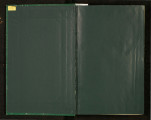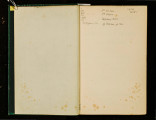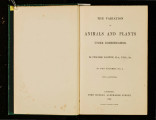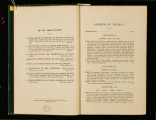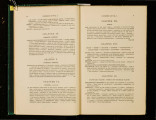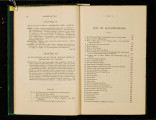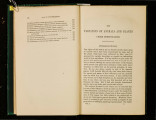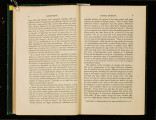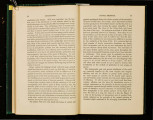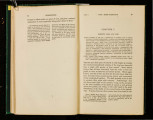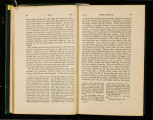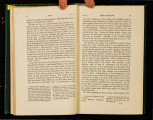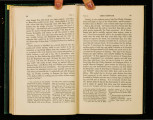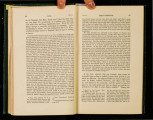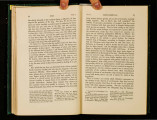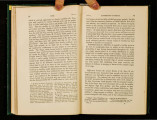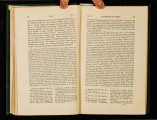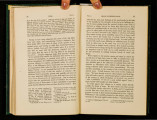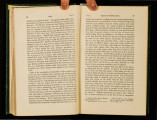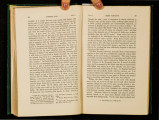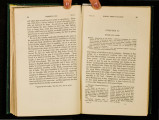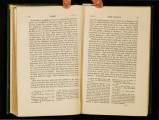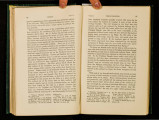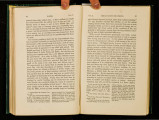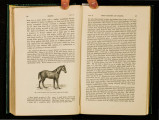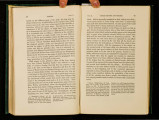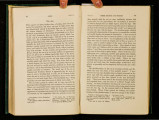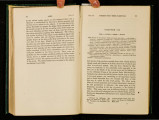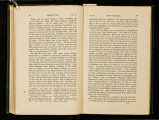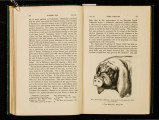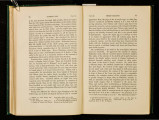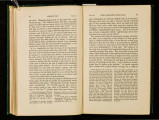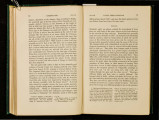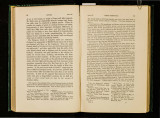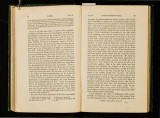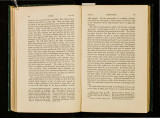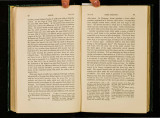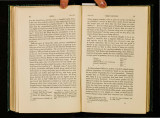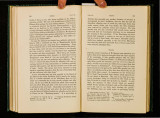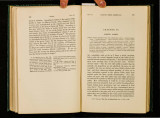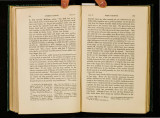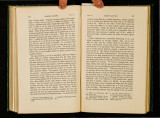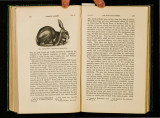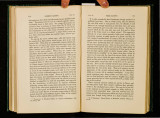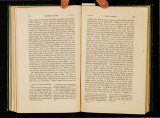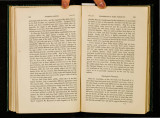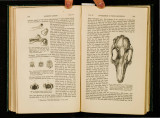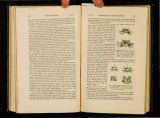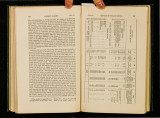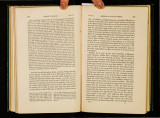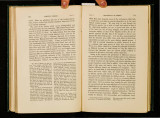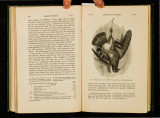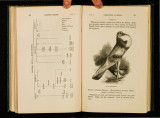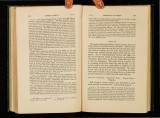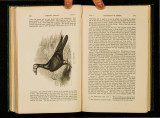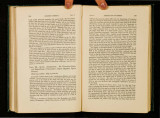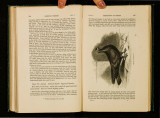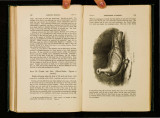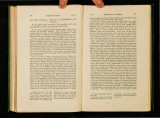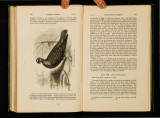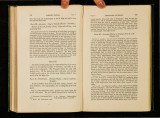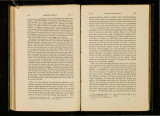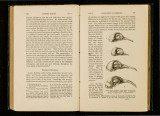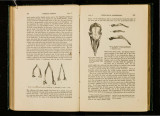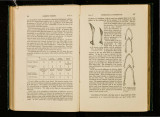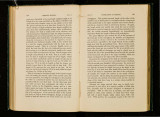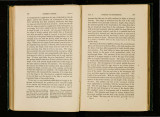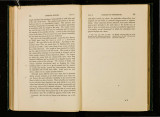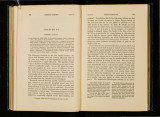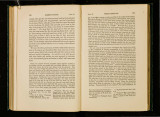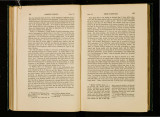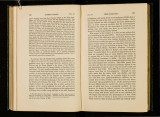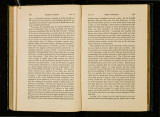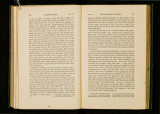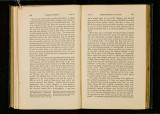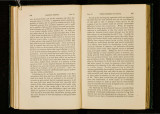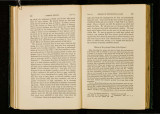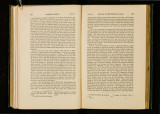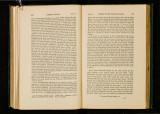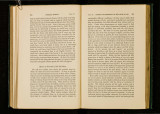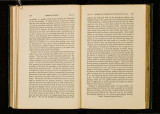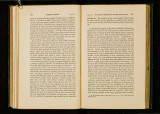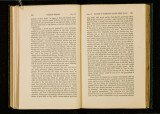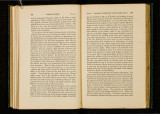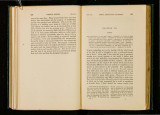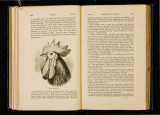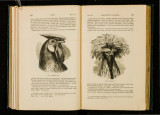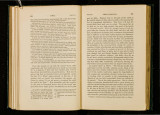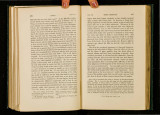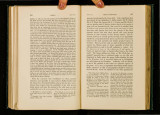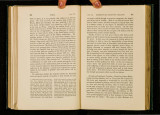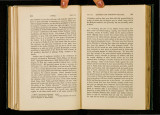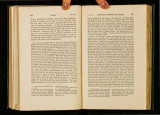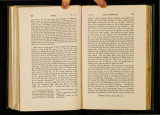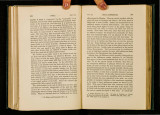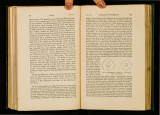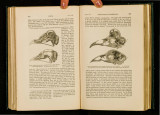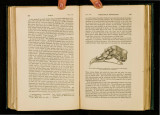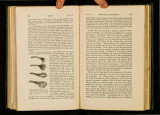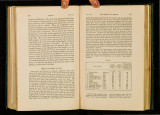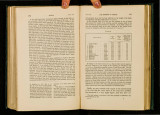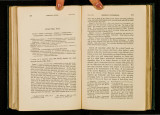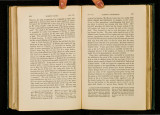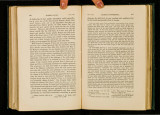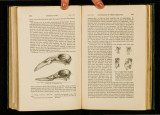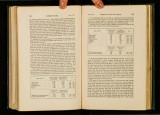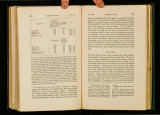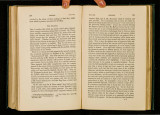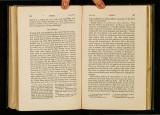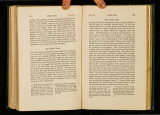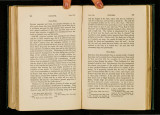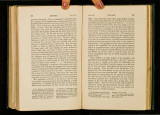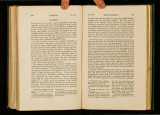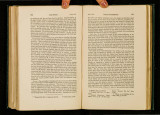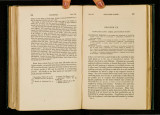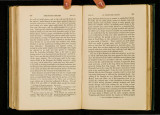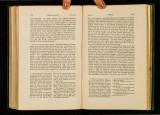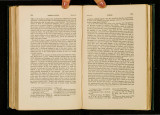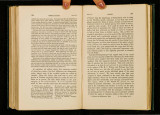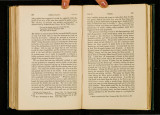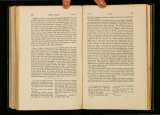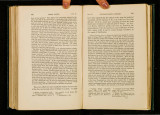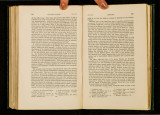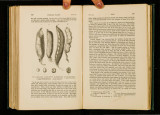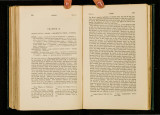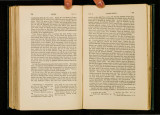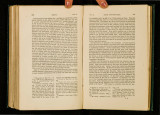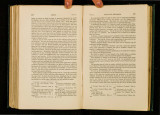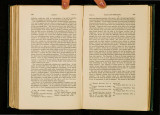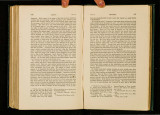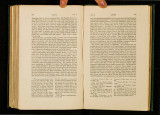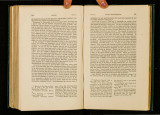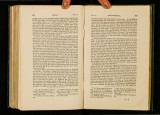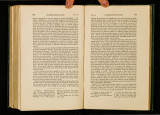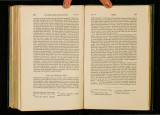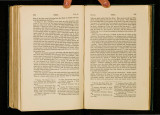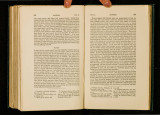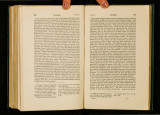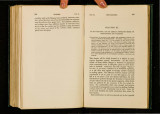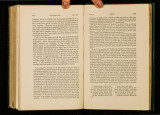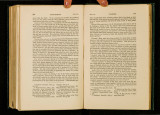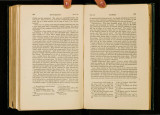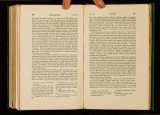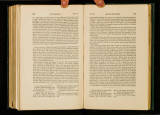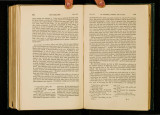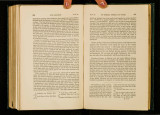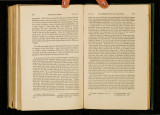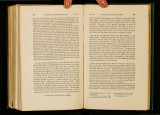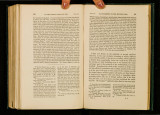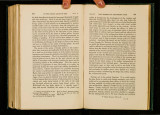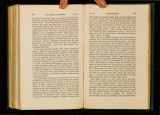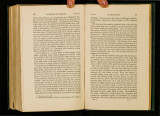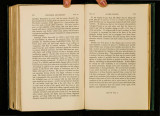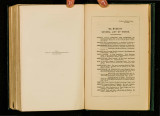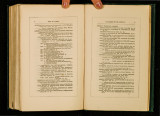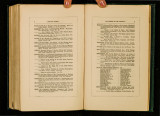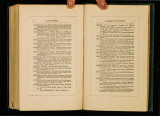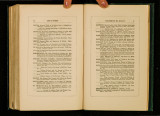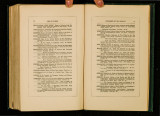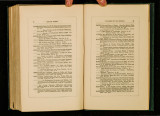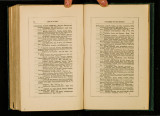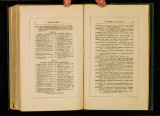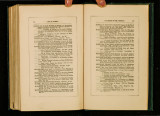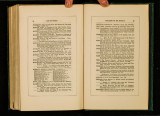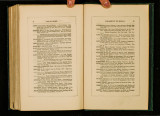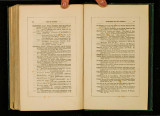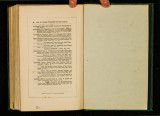| OCR Text |
Show 35G FRUITS: WALNUT. CHAP. x. 1830 "Tenzer" weighed 32 d wts. 13 grs. ; in 1841 "Wonderful" w~igbed 32 dwts. 16 grs.; in 184.4 "London" weighed 35 clwts. 12 g.rs., and m. tho -" 11 · . 3G _, t 1G · · · and in 1852 in Staffordshire the frmt of ~o . owmg yeai uw s. gts., . . . , 7 . 127 8\)t': this same variety roached tho astonislnng wOJght of ~7 dwts. gL~., ~~ <> gr . . ; that is, between seven and eight times tho wOJght of the Wild ~1 mt. I find that n. small apple, G~ inches in circumference, bas exactly tlus s~mo weight. Tho "London" gooseberry (which in 18G2 bad altogether gamed 34.3 prizes) has, up to tho present year of 1864, n?v~r reached a groa~:r weight than tbat attained in 1852. P01:haps tho fr~ut of tho ~oosob~uy has now roached tho greatest possible wmght, unless m tho com so of time some quito now and distinct variety shall arise. . This o-raclual, and 011 tho whole steady increase of wmght from tho latter part of tho last contmy to tho year 1852, is probably i~ largo ~ad ~uo to improved methods of cultivation, for extreme care IS no:v _taken , tho branches and roots arc trained, composts arc made, tho sml ~s mulched, and only a few bcnics arc left on each bush; 1 ~8 but the J~croaso _no doubt is in main prtrt duo to tho continued sol?cti?n of secdlmgs ':hwh have been fimncl to be more and more capaulc of ywlding such oxtraordmary frnit. Assmcclly tho "Highwayman" in 1817 could not have produ~od fmit like that of tho "lloaring Lion" in 1825; nor could the " R?anng Lion," though it was grown by many persons in many places, gam tho supreme triumph achieved in 1852 by tho "London" Gooseberry. . lt'itl11ut (.lnylwns ?'I'.IJia ).-This tree and tho common nut belong t? a w1~cly different order from the foregoing fruits, and are therefore here notiCed. rho walnut grows wild in the Caucasus and Himalaya, where Dr. Hooker 129 found the fruit of full si>~c but" as bard as a h:ickory-nut." In England tho walnut prcRcnts considerable differences, in tho slJnpo and size of ~he fruit, in t_ho thickness of tho husk, and in tho thinness of tho shell; tlus latter quallty bas given rise to a variety called the thin-shollccl, wbic!1 is valuable, lmt suffers from tho attacks of tom-titsYlo The degree to which the kernel fills the shell varies much. In France thoro is a variety called tho Grape or clnster-walnut, in which tho nuts grow in "bunches of ten, fifteen, or even twenty togctl10r." There is another variety which bears on th~ same tree di[orently shaped leaves, like the hetcrophyllons hornbeam; this tree is also remarkable from having pendulous branches, and bearing elongated, large, thin-shelled nuts.lSl M. Cardan has minutely ~escribc~ 132 some singular physioloo-ical peculiarities in the June-leafing varwty, :vlu~h produces its leaves and flowers four or five weeks later, and rota~ns_ Its leaves and fruit in tho autumn much longer, than tho common vanotws; 121 'Gardener's Chronicle,' 1844, p. 811, wlwrc a talJlc is given ; nnd 1845, p. 8Hl. :For tho extreme weights gnincd, see • Journal of llorticu!Lurc,' July 2G, 18G4, p. (il. 12s Mr. Sn nl, of Lancaster, in Loudon's 'Ganlcner't> Mag.,' vol. iii. 1828, p. 421 : and vol. x. 1834, p. 42. 129 'Himalayan Joumals,' 1854, vol. ii. p. 334. Moorcroft(' Travels,' vol. ii. p. 1.16) describes four varieties cultivated in Kashmir. 1:10 • Gardener's Chronicle,' 1850, p. 728. 131 Paper translated in Loudon's • Gnrdcncr's l'liag.,' 1829, vol. v. p. 202. 132 Quoted in 'Gardener'~ Chronicle,' 1849, p. 101. CHAP. X. CUCURDITACEOUS PLANTS. 357 but in August is in exactly the same state with them. These constitutional peculiarities are strictly inherited. Lastly, walnut-trees, which aro properly monoicous, sometimes entirely fail to produce male flowcrs. 183 Nuts ( Gorylus avellana).-l\1:ost botanists rank all the varieties under the same species, tho common wild nut.181 The husk, or involucre, differs greatly, being extremely short in Barr's Spanish, and extremely long in filberts, in which it is contracted so as to prevent tho nut falling out. This lcincl of husk also protects tho nut from birds, for titmice (Parus) have been obsorvccl 135 to pass ovqr filberts, and attack cobs and common nut· growing in the same orchard. In the purple-filbert the husk is purple, and in the fi'izzled-filbcrt it is curiously laciniatod; in the reel-filbert the }Jolliclc of tho kcmel is red. Tho shell is thick in some ' 'arictics, but is thin in Cosforcl's-nut, and in one variety is of a bluish colour. The nut itself differs much in size and shape, being ovate and compressed in filberts, nearly round and of groat sizo in cobs and Spanish nuts, oblong and longitudinally striated in Cosford's, and obtusely four-sided in the Downton Square nut. Gucur-bitaceous plants.-Tbcse plants have been for a long period the opprobrium of botanists; numerous varieties have been ranked as species, and, what happens more rarely, forms which now must be considered as species bavo been classed as varieties. Owing to tho admirable experimental researches of a distinguished botanist, M. Naudin,t3G a flood of light bas recently been thrown on this group of plants. M. Nauclin, during many years, observed and experimented on above 1200 living specimens, collected fi·om all quarters of the world. Six species are now 1·ecognised in tho genus Cucurbita; but three alone have been cultivated and concern us, namely, G. maxima and pepo, which include all pumpkins, gourds, squashes, and vegetable marrow, ::mel G. moschata, tho water-melon. These three species are not known in a wild state; but Asa Gray 137 gives good reason for believing that some pumpkins arc natives of N. America. These three species arc closely allied, and have the same general habit, but their innumerable varieties can always be distinguished, according to Naudin, by certain almost fixed characters; and what is still more important, when crossed they yield no seed, or only sterile seed; whilst the varieties spontaneously intercross with the utmost freedom. Naudin insists strongly (p. 15), that, though these three species have varied greatly in many characters, yet it has been in so closely an analogous manner that tbo varieties can be arranged in almost parallel sm·ics, as we have seen with the forms of wheat, with the two main mces of tho peach, and in other cases. Though some of the varieties arc inconstn.nt in character, yet others, when grown separately under uniform conditions of lifo, arc, as Naudin repeatedly (pp. 6, 1G, 35) urges," donees d'uno stn.bilitc 133 'Gardener's Chronicle,' 1847, pp. 5±1 und 558. 131 The following details uro tnkcn from the Catalogue of Fruits, 181.2, in Carden of Hort. Soc., p. 103; and from Loudon's ' Eucyclop. of Gardening,' p. 943. 136 • Gardener's Chron.,' 18GO, p. 95G. 136 'Annalcs des So. Nat. Bot.,' 4Ul series, vol. vi. 1856, p. 5. 137 'American Joum. of Science,' 2nd SOl'. vol. xxiv. 1857, p. 442. |



